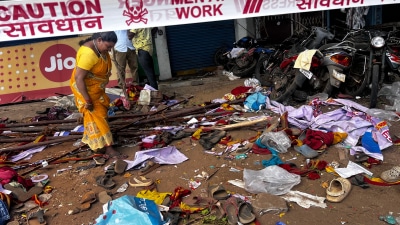Stay updated with the latest - Click here to follow us on Instagram
State’s vision document 2030 lays stress on solar power for farmers
The difference is recovered in the form of cross subsidy from the industries and commercial consumers across the state.
In order to bring down the subsidies provided to farmers for electricity connections, the state government is exploring various options, including solar energy. The vision document 2030 indicated the electricity connections for agriculture pumps would rise sharply from current 40 lakh to 60 lakh in next one decade. As a result, the total expenditure on power subsidy for agriculture sector in next 10 years would cross Rs 65,000 crore.
Highly placed sources in the agriculture and power departments said at present the state provides electricity to farmers for agriculture pumps at 0.85 paise per unit, however, the actual cost of power falls between Rs 4.50 and Rs 5 per unit.
The difference is recovered in the form of cross subsidy from the industries and commercial consumers across the state.
While explaining the challenges in the power sector vis-à-vis agriculture, officials said they received the mandate from Chief Minister Devendra Fadnavis to ensure that maximum number of farmers get the connections at the earliest.
The state government was of the opinion that providing separate solar feeder for agriculture sector could be a workable model in the next two years. The state government has sanctioned pilot projects which would be extended across the state in coming year. While the government intended to continue subsidy to farmers, it wanted a model that would help farmers with 24 hours uninterrupted power supply for better agriculture practices.
According to department’s data, “In the year 2015-16, Maharashtra State Electricity Distribution Company Limited (MahaVitran) provided new electricity connection to 1.30 lakh agriculture pumps. It has set the same target of 1.30 lakh for year 2016-17. Almost attaining its target of one lakh, so far.”
Almost 40 lakh farmers who avail the electricity subsidy for agriculture pumps were provided Rs 4,790.89 crore in 2016-17, as against Rs 4,519.10 crore a year before.
Earlier, the chief minister had indicated that solar feeder model was workable and economical in the long term for the farmers. Apart from facilitating extended hours of power, and after the initial installation cost, the solar model works out to be cheaper.







